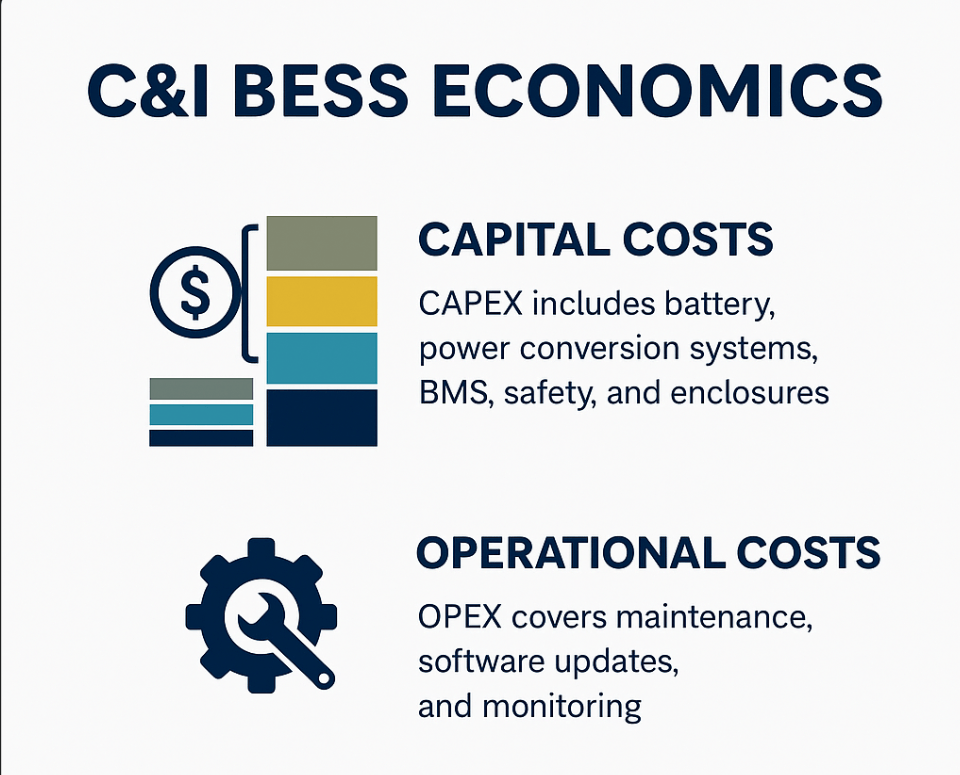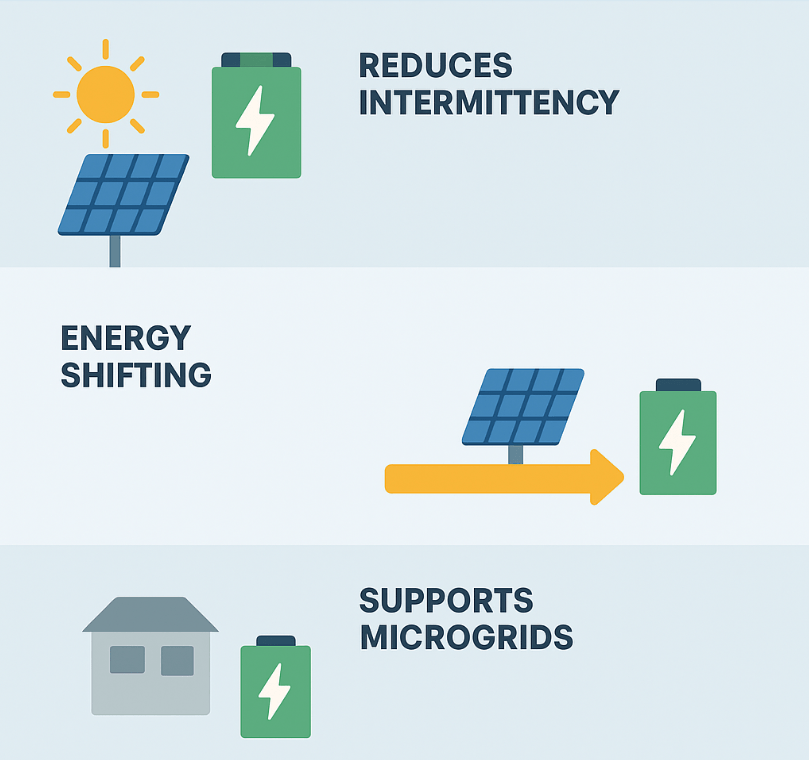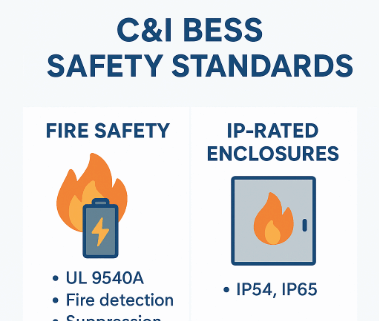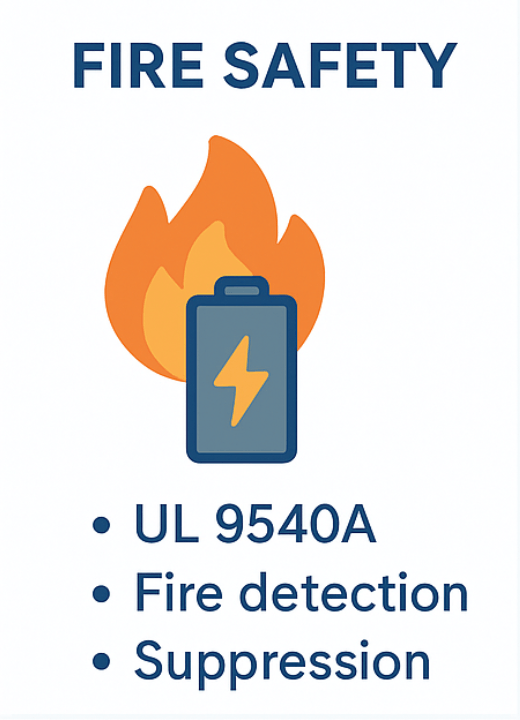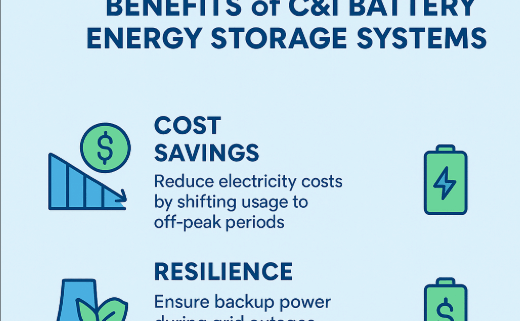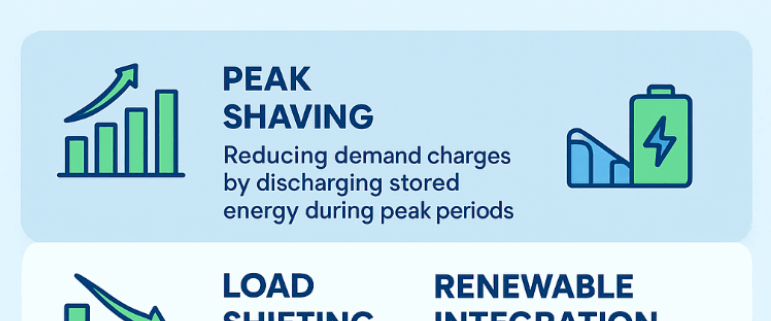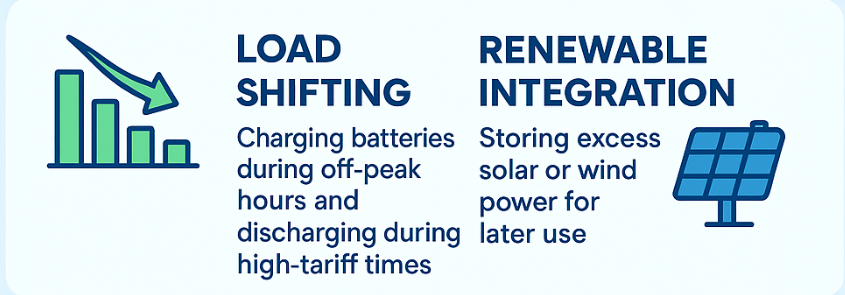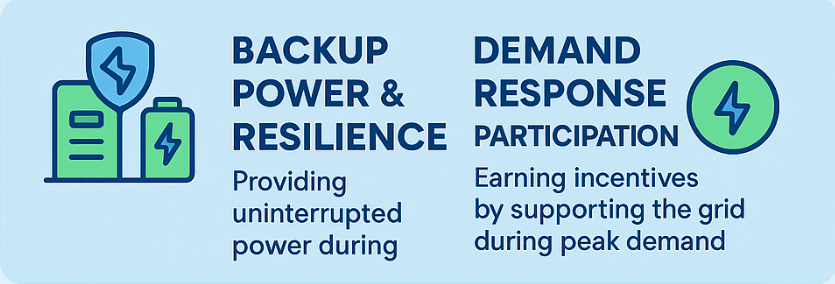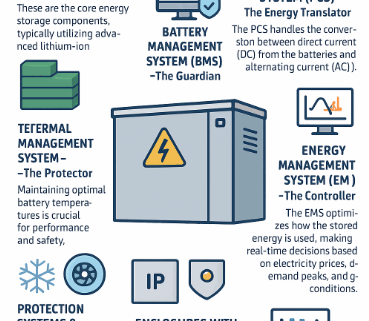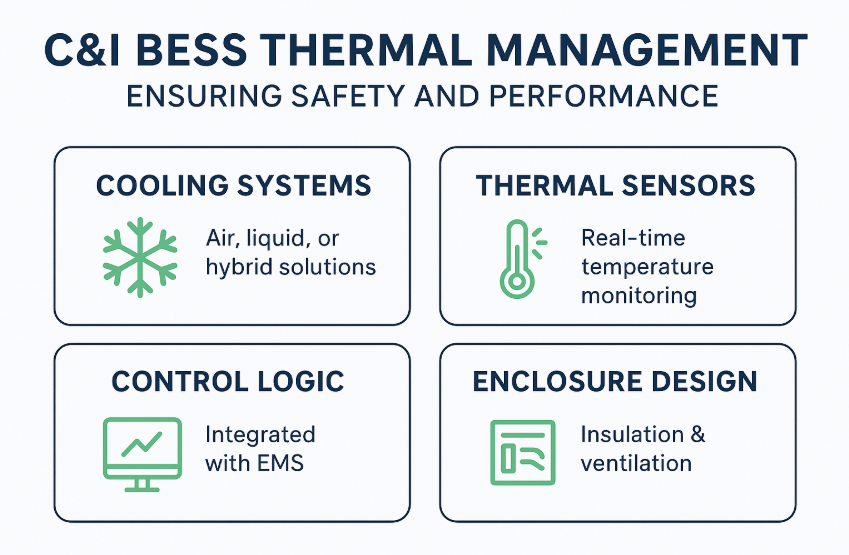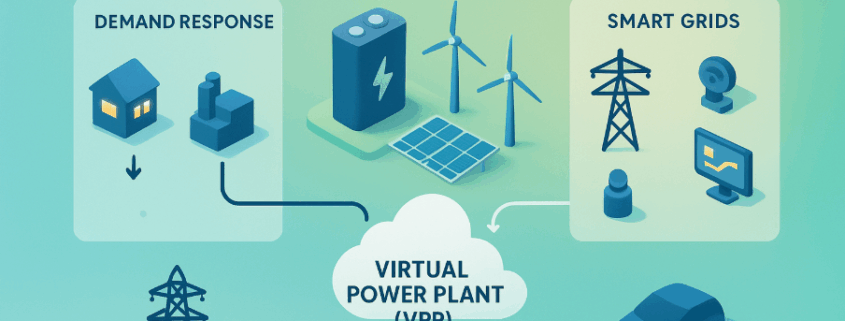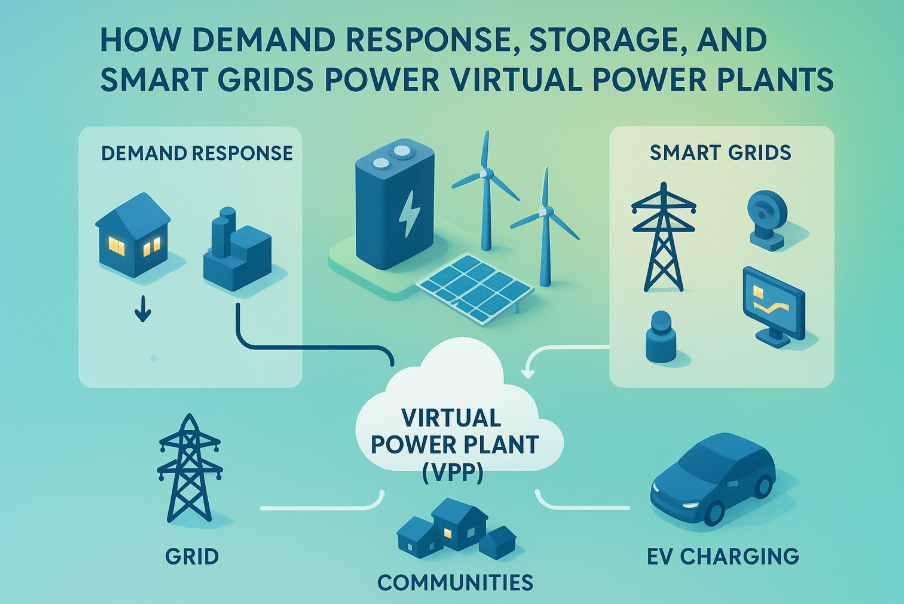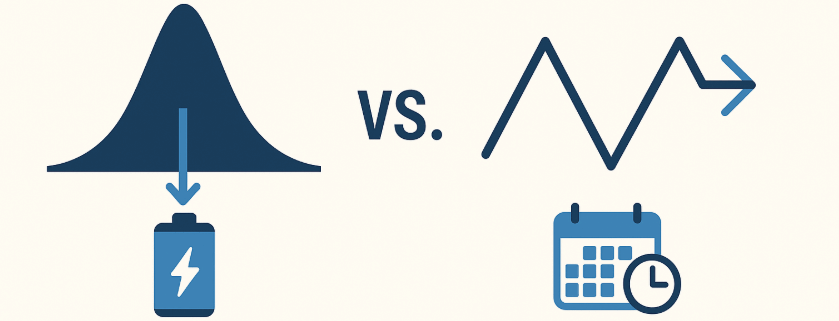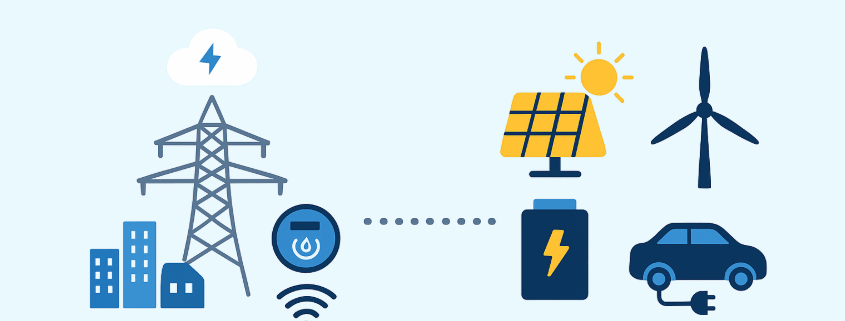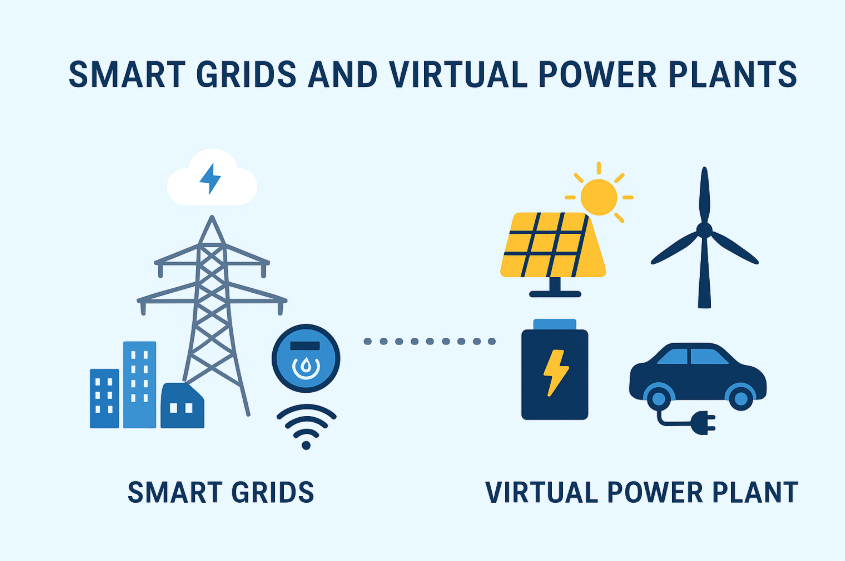Understanding the Economics of C&I BESS Deployment
C&I BESS economics is becoming a critical consideration for businesses investing in energy storage solutions. By evaluating costs, return on investment (ROI), and key applications such as peak shaving, energy shifting, and renewable integration, companies can strategically plan how battery energy storage systems (BESS) deliver long-term financial and operational benefits.
Why C&I BESS Economics Matters
The adoption of commercial and industrial battery energy storage systems is no longer just about sustainability. It’s about cost competitiveness, business continuity, and energy independence. C&I BESS helps organizations reduce energy expenses, optimize renewable energy use, and avoid downtime caused by grid instability.
For decision-makers, the economics provide the blueprint for determining whether a system is financially viable. Unlike traditional infrastructure, BESS generates multiple revenue streams—making it a compelling long-term investment.
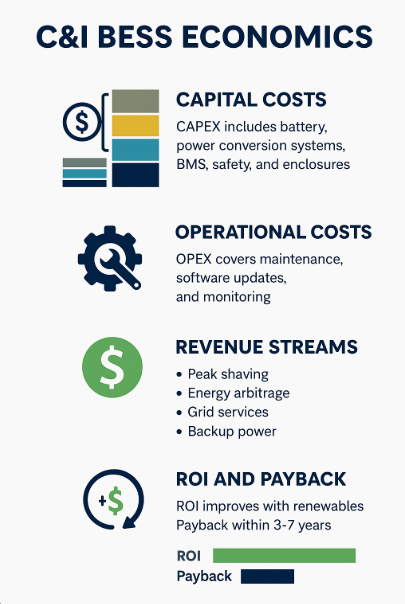
Cost Components of C&I BESS
When evaluating C&I BESS economics, businesses need to consider all the cost components involved in deployment:
- Capital Expenditure (CAPEX): Includes the cost of battery modules, power conversion systems (PCS), enclosures, and installation.
- Operational Expenditure (OPEX): Covers routine maintenance, software updates, and monitoring systems.
- Integration Costs: Grid interconnection, compliance with utility standards, and renewable energy integration.
- Safety & Compliance Costs: Fire safety systems, IP-rated enclosures, and certifications to meet international standards.
Understanding these costs ensures businesses can budget accurately and anticipate ROI timelines.
Return on Investment (ROI) for C&I BESS
ROI is one of the most attractive elements of C&I BESS economics. While upfront costs may seem high, the savings and revenue opportunities deliver significant returns. Key ROI drivers include:
- Energy Bill Savings: Demand charge reduction and peak shaving lower operational expenses.
- Grid Services Revenue: Businesses can participate in frequency regulation and demand response programs.
- Enhanced Renewable Utilization: Solar and wind power can be stored and used later, reducing reliance on expensive grid power.
- Backup Power Value: Avoiding downtime and protecting operations ensures business continuity.
Typically, ROI periods range from 3–7 years, depending on system size, energy pricing, and incentive availability.
Peak Shaving: A Core Economic Benefit
One of the strongest links in C&I BESS economics is peak shaving. Utilities often charge businesses based on their highest 15-minute demand interval each month. By deploying stored energy during peak demand, companies reduce these costly charges significantly.
👉 Read more about C&I BESS applications for peak shaving here.
Applications Driving C&I BESS Economics
Beyond peak shaving, several applications contribute to positive BESS economics:
- Energy Shifting: Storing cheap off-peak power for use during high-tariff hours.
- Microgrid Support: Ensuring resilience and independence from grid instability.
- EV Charging Integration: Supporting electric vehicle fleet charging without overwhelming the grid.
- Renewable Energy Optimization: Aligning variable renewable supply with steady industrial demand.
👉 Explore the full range of C&I BESS applications here.
Incentives and Policy Support
C&I BESS economics improve dramatically when businesses leverage incentives and policy support. Many governments and utilities offer:
- Tax Credits & Subsidies for renewable-linked storage projects.
- Utility Rebates for demand reduction.
- Green Financing Options that lower CAPEX burden.
These programs shorten the payback period and strengthen the investment case.
Barriers to Strong Economics
Despite the benefits, certain challenges affect C&I BESS economics:
- High Upfront CAPEX compared to traditional energy solutions.
- Uncertain Energy Tariffs that impact ROI predictability.
- Complex Regulatory Approvals for grid-connected projects.
- Technology Risks tied to battery degradation over time.
However, with falling battery costs and stronger policy frameworks, these barriers are steadily declining.
The Long-Term Value of C&I BESS
The true value of C&I BESS economics goes beyond immediate savings. Businesses gain:
- Energy Cost Stability: Protection against volatile energy prices.
- Sustainability Branding: Meeting ESG and decarbonization goals.
- Future-Readiness: Supporting electrification and digital operations.
In a competitive global market, companies that adopt BESS early gain a strong operational and reputational edge.
Conclusion
C&I BESS economics proves that energy storage is not just a cost—it’s a strategic investment. From peak shaving to renewable integration, the financial and operational benefits outweigh the challenges. With the right planning, incentives, and applications, commercial and industrial energy storage transforms from an expense into a long-term value generator.
By understanding these economics, businesses can make informed decisions, optimize their energy strategies, and strengthen both resilience and profitability in a rapidly evolving energy landscape.


